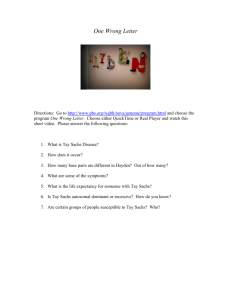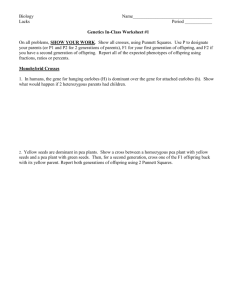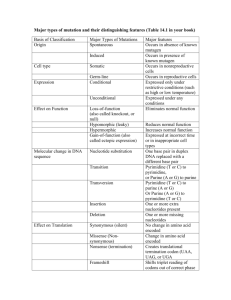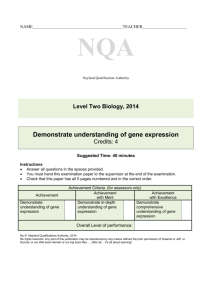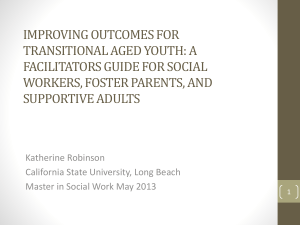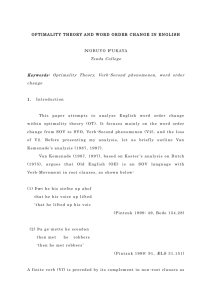The Goldstein family is of Ashkenazi Jewish descent
advertisement
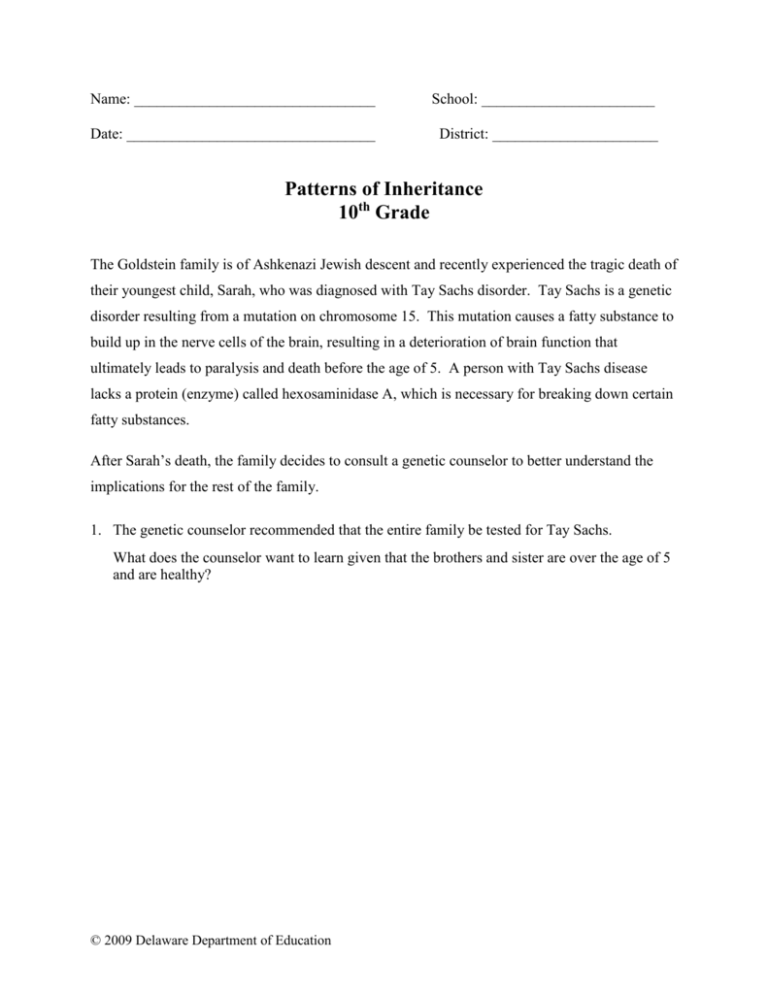
Name: ________________________________ School: _______________________ Date: _________________________________ District: ______________________ Patterns of Inheritance 10th Grade The Goldstein family is of Ashkenazi Jewish descent and recently experienced the tragic death of their youngest child, Sarah, who was diagnosed with Tay Sachs disorder. Tay Sachs is a genetic disorder resulting from a mutation on chromosome 15. This mutation causes a fatty substance to build up in the nerve cells of the brain, resulting in a deterioration of brain function that ultimately leads to paralysis and death before the age of 5. A person with Tay Sachs disease lacks a protein (enzyme) called hexosaminidase A, which is necessary for breaking down certain fatty substances. After Sarah’s death, the family decides to consult a genetic counselor to better understand the implications for the rest of the family. 1. The genetic counselor recommended that the entire family be tested for Tay Sachs. What does the counselor want to learn given that the brothers and sister are over the age of 5 and are healthy? © 2009 Delaware Department of Education Genetic Testing Results Figure 1 – DNA Sequences DNA Sequence on Chromosome 15 Siblings Michael Jennifer Bob Sarah First Allele AGACTATCA AGACTACCA AGACTACCA AGACTATCA Second Allele AGACTACCA AGACTACCA AGACTACCA AGACTATCA Age 18 12 7 Died – age 3 Figure 2 – Goldstein Family Pedigree Michael Dad Mom ? ? Jennifer © 2009 Delaware Department of Education Bob Sarah 2 2. The genetic screening for Tay Sachs provided the evidence in Figures 1 and 2. a. Circle the specific mutations in the DNA sequence (Figure 1) that is responsible for Sarah’s disorder. b. Identify the autosomal pattern of inheritance in which Tay Sachs is passed from one generation to the next using the evidence in Figures 1 and 2. 3. Identify both Mom and Dad’s genotypes based on the information provided in Figures 1 and 2 and in the family history. Mom ________________ Dad ________________ 4. Investigate how Sarah’s DNA sequence resulted in the absence of the protein necessary to break down fatty substances in the brain by using Figure 1. a. In the process of transcription, DNA is copied into mRNA. Identify the messenger RNA strand that is transcribed from Sarah’s DNA sequence. Identify the messenger RNA strand that is transcribed from Jennifer’s DNA sequence. © 2009 Delaware Department of Education 3 Figure 3 – Codon Amino Acid Chart Source: www.en.wikipedia.org 2nd base U U C 1st base A G C A G UUU (Phe/F)Phenylalanine UCU (Ser/S)Serine UAU (Tyr/Y)Tyrosine UGU (Cys/C)Cysteine UUC (Phe/F)Phenylalanine UCC (Ser/S)Serine UAC (Tyr/Y)Tyrosine UGC (Cys/C)Cysteine UUA (Leu/L)Leucine UCA (Ser/S)Serine UAA Ochre (Stop) UGA Opal (Stop) UUG (Leu/L)Leucine UCG (Ser/S)Serine UAG Amber (Stop) UGG (Trp/W)Tryptophan CUU (Leu/L)Leucine CCU (Pro/P)Proline CAU (His/H)Histidine CGU (Arg/R)Arginine CUC (Leu/L)Leucine CCC (Pro/P)Proline CAC (His/H)Histidine CGC (Arg/R)Arginine CUA (Leu/L)Leucine CCA (Pro/P)Proline CAA (Gln/Q)Glutamine CGA (Arg/R)Arginine CUG (Leu/L)Leucine CCG (Pro/P)Proline CAG (Gln/Q)Glutamine CGG (Arg/R)Arginine AUU (Ile/I)Isoleucine ACU (Thr/T)Threonine AAU (Asn/N)Asparagine AGU (Ser/S)Serine AUC (Ile/I)Isoleucine ACC (Thr/T)Threonine AAC (Asn/N)Asparagine AGC (Ser/S)Serine AUA (Ile/I)Isoleucine ACA (Thr/T)Threonine AAA (Lys/K)Lysine AGA (Arg/R)Arginine AUG (Met/M)Methionine, Start[1] ACG (Thr/T)Threonine AAG (Lys/K)Lysine AGG (Arg/R)Arginine GUU (Val/V)Valine GCU (Ala/A)Alanine GAU (Asp/D)Aspartic acid GGU (Gly/G)Glycine GUC (Val/V)Valine GCC (Ala/A)Alanine GAC (Asp/D)Aspartic acid GGC (Gly/G)Glycine GUA (Val/V)Valine GCA (Ala/A)Alanine GAA (Glu/E)Glutamic acid GGA (Gly/G)Glycine GUG (Val/V)Valine GCG (Ala/A)Alanine GAG (Glu/E)Glutamic acid GGG (Gly/G)Glycine b. Referring to Figure 3, explain how Sarah’s DNA sequence results in her inability to break down fatty substances in the brain (Tay Sachs disorder). © 2009 Delaware Department of Education 4 5. Years later, Michael (Sarah’s oldest brother) and his new bride, Rebecca, began to plan for a family. Rebecca was tested for the presence of the Tay Sachs mutation because of Michael’s family history. a. Predict the probability of each genotype and phenotype in the offspring if Rebecca IS carrying a mutation for Tay Sachs. Genotype Probability Phenotype Probability b. Predict the probability of each genotype and phenotype in the offspring if Rebecca IS NOT carrying a mutation for Tay Sachs. Genotype Probability © 2009 Delaware Department of Education Phenotype Probability 5 6. Using the information in the introduction, explain why Tay-Sachs would affect more males than females if it was a sex-linked disorder. © 2009 Delaware Department of Education 6
